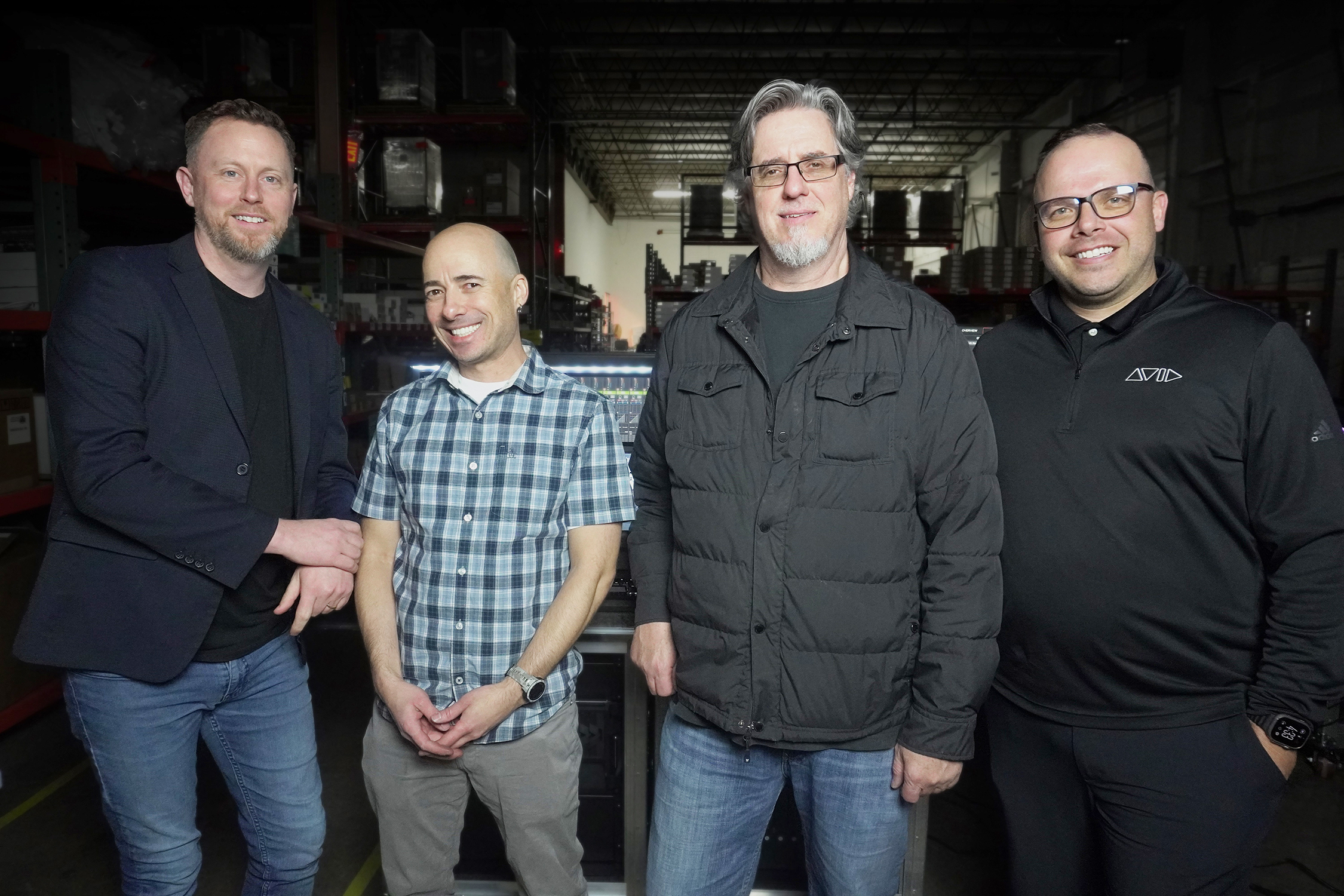NBCOlympics Captures The ‘Essence’ Of PyeongChang With Vision, Technology
STAMFORD, CONN.—Each time NBCOlympics presents coverage of the Olympics, it tasks its logistics and creative teams with designing studios that capture the essence of the country hosting the games, said Michael Sheehan, Coordinating Director for NBC Olympics.
Coverage of the just-concluded Winter Games from PyeongChang in South Korea, was no different. “There were so many large, impressive mountains in the region of PyeongChang that we developed our concept around that,” said Sheehan.
GEODESIC DOME CONCEPT
The concept for the set was a carved-out geodesic dome with the structure affixed to the raw stone of a mountain and a large window looking out upon the valley and mountains of PyeongChang. Central to the design was a massive LED video wall from Leyard, which created the window. “I think it was the largest display we’ve ever done on the Olympics,” said Sheehan.
The 43-foot-wide-by-13-foot-high video wall, which consisted of 196 individual Leyard TWS Series LED displays, served as a seamless canvas for the custom content created by NBC’s graphics team. However, feeding visuals to the wall took a bit of “head scratching,” said Sheehan. While the games were produced in 1080i, a video wall of this size required 4K content to avoid any appearance of stretching.
The solution was to playback 4K content created by NBC’s graphics staff from a ChyronHego Prime Graphics platform to a Barco E2 presentation system and ultimately onto the Leyard LED video wall.
Originating video in 4K to be displayed on this wall wasn’t a concern because nearly all of the content was graphically rendered. “This workflow worked perfectly for us,” Sheehan said, “from the graphics standpoint to the Chyron, to the Barco and to the displays inside the Leyard wall.”
Get the TV Tech Newsletter
The professional video industry's #1 source for news, trends and product and tech information. Sign up below.
[Read: NBC To Broadcast 2018 Winter Olympics Live Across U.S]
However, a separate 16-foot-wide, 8-foot-high Leyard LED video wall consisting of 36 displays did display 1080i video. To be consistent with the overall look of the set, this wall was used as a scenic with “a fabrication” placed in front of the monitors that essentially cut off the edges of the overall display, according to Sheehan.
That meant there was a sweet spot for the video content displayed on the wall. “We were careful not to use content where really critical things were happening on the outside edge,” he said.
THREE SEPARATE LOOKS
At the back of the studio where the stone wall met the geodesic dome, three 4-foot-wide, 7-foot-high Leyard LED video walls hung from pipes so they could be easily moved and set up in different ways. This part of the studio served as NBCOlympics’ main interview area, where the network wanted to have a large, impressive look, he said.
“We set up three templates for use on these walls,” said Sheehan. One configuration had the three side-by-side to create a large display; another had two pushed together with a separation from the third; and still another separated all three for different types of content.
“The beauty of this approach was it gave us three separate looks in that area,” said Sheehan. “It made us look gigantic.”
“They [the LED video walls] were much larger than any monitor could possibly be,” he said. “We never even thought about going glass or plasma. We knew that would have to be LED and Leyard.”
One alternative could have been virtual sets and augmented reality, but that option was never given much serious consideration. “I tend to gravitate towards organic scenery,” said Sheehan. “I’m not really big into augmented reality with the exception of it being a secondary support.”
There is a lot of value in having talent sitting at real desks and stand in front of real things, he said. “I want the crew and people to walk into an actual environment and fall in love with it and be a part of that environment for the entire time.”
One of the first uses NBC made of this LED display technology was about four years ago when it built its “Football Night in America” studio in Stamford, Conn., he said. “There has been a consistency of this technology [since that first use] and out of the box it goes together and works.”
Having confidence the LED walls are reliable and will deliver the quality and high resolution needed for an event watched by so many people is a real comfort, especially given the hectic setup and size of a project like covering the Olympics, Sheehan said.
“We do the biggest television show in the world from an area that was a year ago a parking lot,” he said Sheehan. “We need to be sure there is reliability.”
Phil Kurz is a contributing editor to TV Tech. He has written about TV and video technology for more than 30 years and served as editor of three leading industry magazines. He earned a Bachelor of Journalism and a Master’s Degree in Journalism from the University of Missouri-Columbia School of Journalism.

